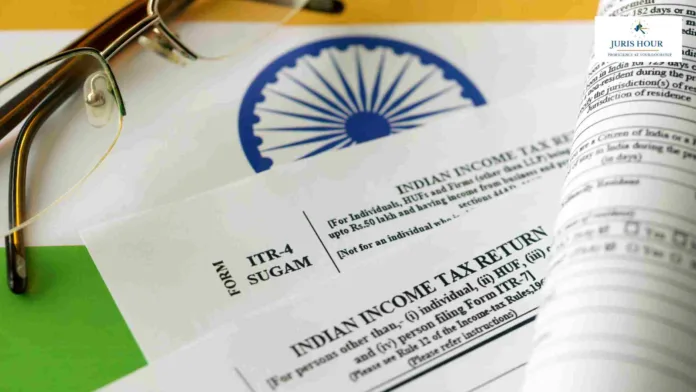The Central Board of Direct Taxes (CBDT) has released the updated Income Tax Return (ITR) Forms ITR-1 (SAHAJ) and ITR-4 for the financial year 2024–25 (Assessment Year 2025–26).
These forms bring notable modifications to eligibility, capital gains reporting, deduction disclosures, and presumptive taxation norms. Below are the nine most significant changes, explained with examples to help taxpayers understand the practical implications.
1. Reporting Long-Term Capital Gains (LTCG) in ITR-1 Now Allowed
Taxpayers can now report LTCG under Section 112A — arising from the sale of listed equity shares and equity-oriented mutual funds — directly in ITR-1, provided the gains do not exceed ₹1.25 lakh and there are no capital losses to carry forward.
Example: If you sold equity mutual funds in FY 2024–25 and earned ₹1.1 lakh as LTCG, you can now report this in ITR-1. Earlier, you would have had to use ITR-2.
2. Simplified Filing for Small Investors
This revision makes ITR-1 more accessible for salaried individuals with modest capital market participation. However, ITR-1 still cannot be used if the taxpayer has:
- LTCG exceeding ₹1.25 lakh
- Any short-term capital gains (STCG)
- Capital gains from immovable property sales
Example: If you sold a residential flat or had STCG on equity shares, you must still file ITR-2.
3. Mandatory Disclosure of Tax Regime Selection
Those who opted out of the new tax regime in AY 2024–25 must now reconfirm their choice — to either continue with the old regime or revert to the new regime.
Example: If you chose the old regime last year to claim HRA and 80C deductions, you need to declare in your return whether you wish to stick to it or switch.
4. Form 10-IEA Acknowledgement Now Compulsory
First-time opt-outs from the new tax regime in AY 2025–26 must mention their Form 10-IEA acknowledgement number. If submitted late, justification must also be furnished.
Example: A salaried employee who previously defaulted to the new regime but now wants to opt for the old regime (to claim deductions) must file Form 10-IEA and include its details.
5. Drop-Down Selection for Deductions
In both ITR-1 and ITR-4, deductions under Sections 80C to 80U must be selected from a drop-down menu with clause-level precision.
Example: Instead of writing “80C – ₹1.5 lakh,” you’ll now need to specify “80C – Life Insurance Premium – ₹50,000” and “80C – PPF – ₹1,00,000” using drop-down options.
6. Relief Mechanism Improved for Foreign Retirement Accounts
Income from retirement funds held abroad, covered under Section 89A, now features enhanced tracking for tax relief.
Example: An NRI returning to India and withdrawing from a 401(k) account in the US can now track deferred tax relief more easily under the new ITR format.
7. Higher Presumptive Tax Limits for Digital Businesses and Professionals
For businesses under Section 44AD, the turnover limit is now ₹3 crore (up from ₹2 crore) if 95% of receipts are digital. Similarly, for professionals under Section 44ADA, the limit rises from ₹50 lakh to ₹75 lakh under the same digital condition.
Example: A CA or consultant earning ₹70 lakh, with over 95% income via bank transfers or UPI, can now file under presumptive taxation using ITR-4 — avoiding detailed bookkeeping.
8. Mandatory Reporting of Non-Dormant Bank Accounts
All active bank accounts held in India during the financial year must now be reported. Dormant accounts (inactive for over two years) are exempt.
Example: If you have four bank accounts but only one has been dormant, you must report the other three in your return, regardless of whether there were any transactions.
9. Clarity and Expanded Scope in Simplified Returns
Overall, the ITR-1 and ITR-4 forms have been expanded in scope, allowing more taxpayers to use simplified forms — provided their income profile fits within the new parameters.
Read More: GSTN Biometric Aadhaar Verification Goes LIVE Pan India — Slot Booking Now Open

